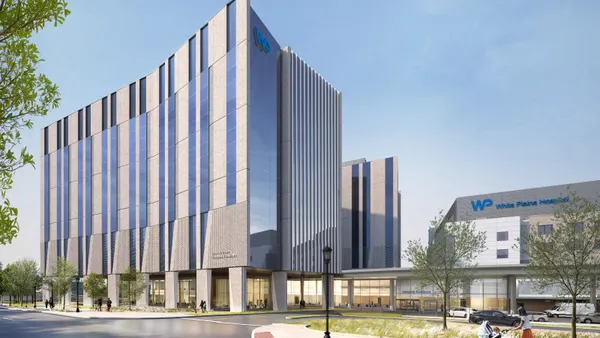Dive Brief:
- The Associated General Contractors of America and Sage Construction and Real Estate predict in a report a strong construction market in 2018, with each market segment growing and most survey respondents planning to increase their headcounts. More than 1,000 AGC member firms from 49 states and the District of Columbia participated in the survey titled "Expecting Growth to Continue: The 2018 Construction Industry Hiring and Business Outlook."
- The net positive reading for all types of construction is 44%, which is the highest reading since the association started the Outlook survey series in 2009.
- Despite the overall optimism outlined in the report, firms remain wary of the ongoing workforce shortage and infrastructure funding issues.
Dive Insight:
In a phone conference Wednesday, AGC's CEO Stephen E. Sandherr attributed contractors' optimism to current economic conditions, a more business-friendly regulatory environment, federal tax cuts leading to stronger demand, and expectations that President Trump will deliver on his infrastructure investment promise.
Contractors in the private office market segment have the most optimism, with a 22% net positive reading. Other segments and their net positive readings include other transportation (all modes other than highway), retail, warehouse and lodging, each at 21%. Meanwhile, water and sewer construction had a 20% net positive reading; K-12 was at 18% and highway and hospitality each yielded a 17% reading.
AGC chief economist Kenneth Simonson noted, however, that he sees signs of saturation in the office and lodging markets, in particular, and he is less optimistic than the surveyed members.
Although still reading net positive, survey respondents were less enthusiastic about construction in the multifamily residential, public building, power, higher education and federal government segments.
Up from 73% last year, 75% of firms in the 2018 report indicate they will increase their headcounts this year, though most said the boost will be by 10% or less. Increased hiring already is reflected in the Labor Department's latest data: construction employment increased in 255 out of 359 metro areas between November 2016 and November 2017. Only 3% of firms in the report said they plan to reduce headcounts, down from 6% last year.
The omnipresent workforce shortage continues to weigh on contractors. Most (82%) of survey respondents said it will become harder or remain difficult to recruit and hire qualified workers, up from 76% last year. Many are taking steps to combat shortages by increasing base pay rates, providing incentives or bonuses, and increasing contributions or improving benefits. Likewise, more than half of the respondents said they plan to increase investments in training and development.
Other concerns noted in the report include increasing competition for business, growth in federal regulations and the lack of new infrastructure investments.
Sage indicated firms are embracing information technology to boost business and address workforce shortages and competition. Half of firms surveyed spend 1% or more of revenue on information technology, and 43% of respondents said they will increase spending as compared with last year. Fifty-two percent have formal technology plans in place, with 8% planning to implement a formal plan.
On a call with media Wednesday, Chuck Graves, president of Construction & Concrete, McAlvain Companies Inc., Boise, Idaho, and Bob Schafer, president of Ranger Construction in West Palm Beach, Fla., spoke about being optimistic, although Graves described an "extremely difficult" time finding qualified carpenters and laborers. His company is working with a local junior high school to educate the community about the benefits of entering the construction industry.
Schafer added how a less-experienced, less-productive workforce necessitates reviewing bidding and promised delivery timeframes. Also, because workers may not have extensive experience, Schafer spoke about the necessary training to not only keep them safe, but building owners and the public safe in work zones. His company has a large in-house risk management group that does OSHA, flagger and other training and qualifying equipment operators to ensure they have the necessary skills and know about the associated safety aspects.












